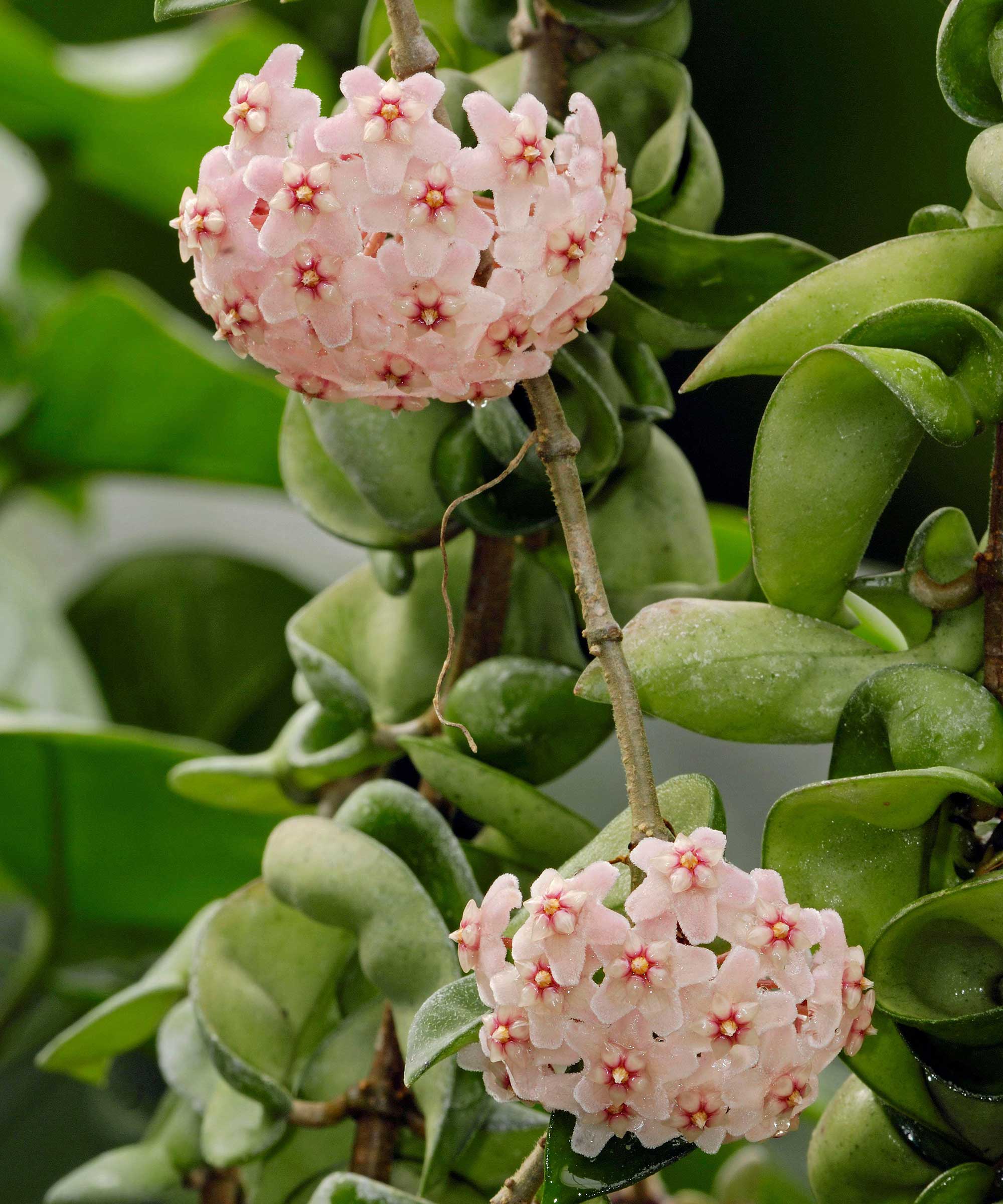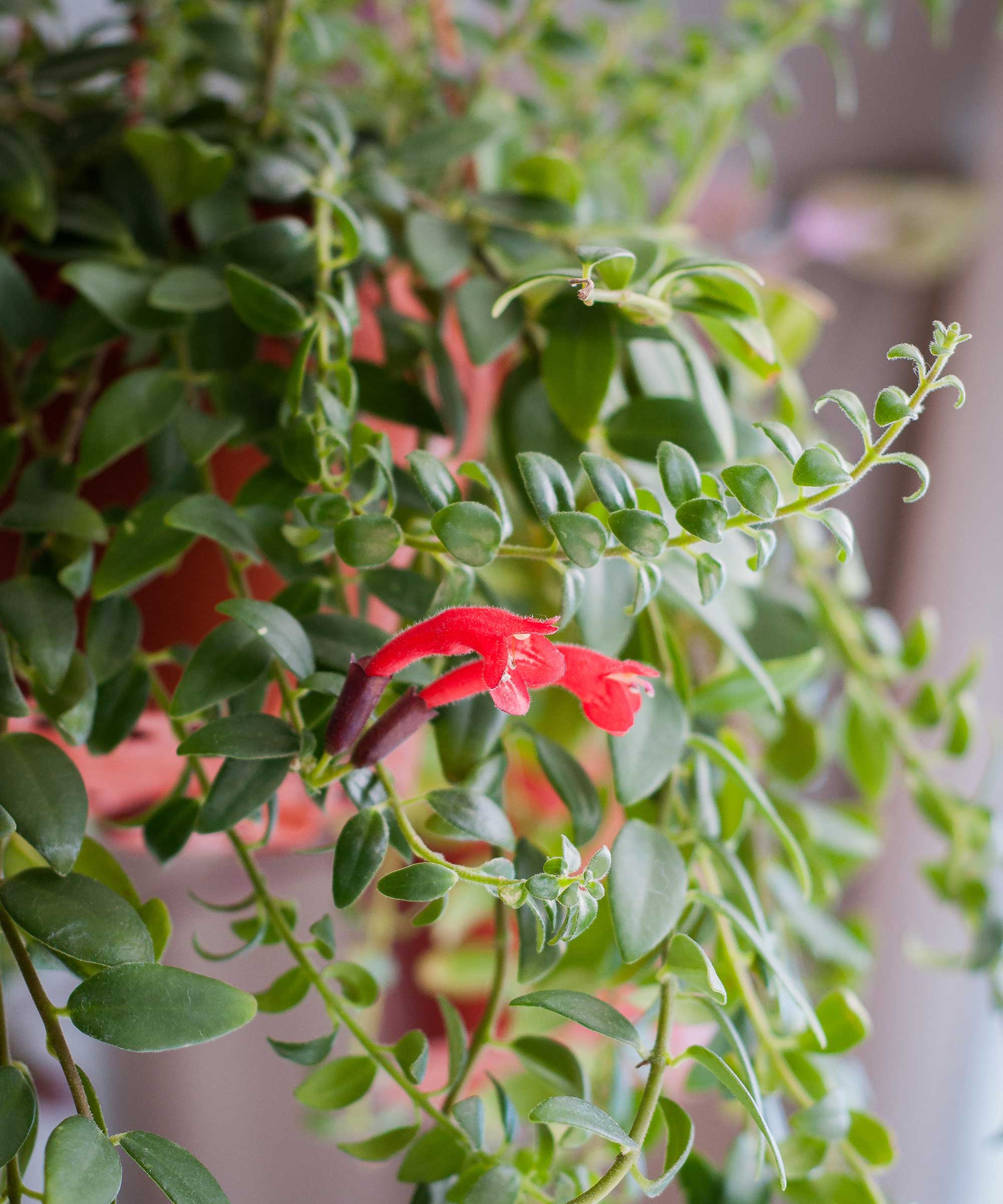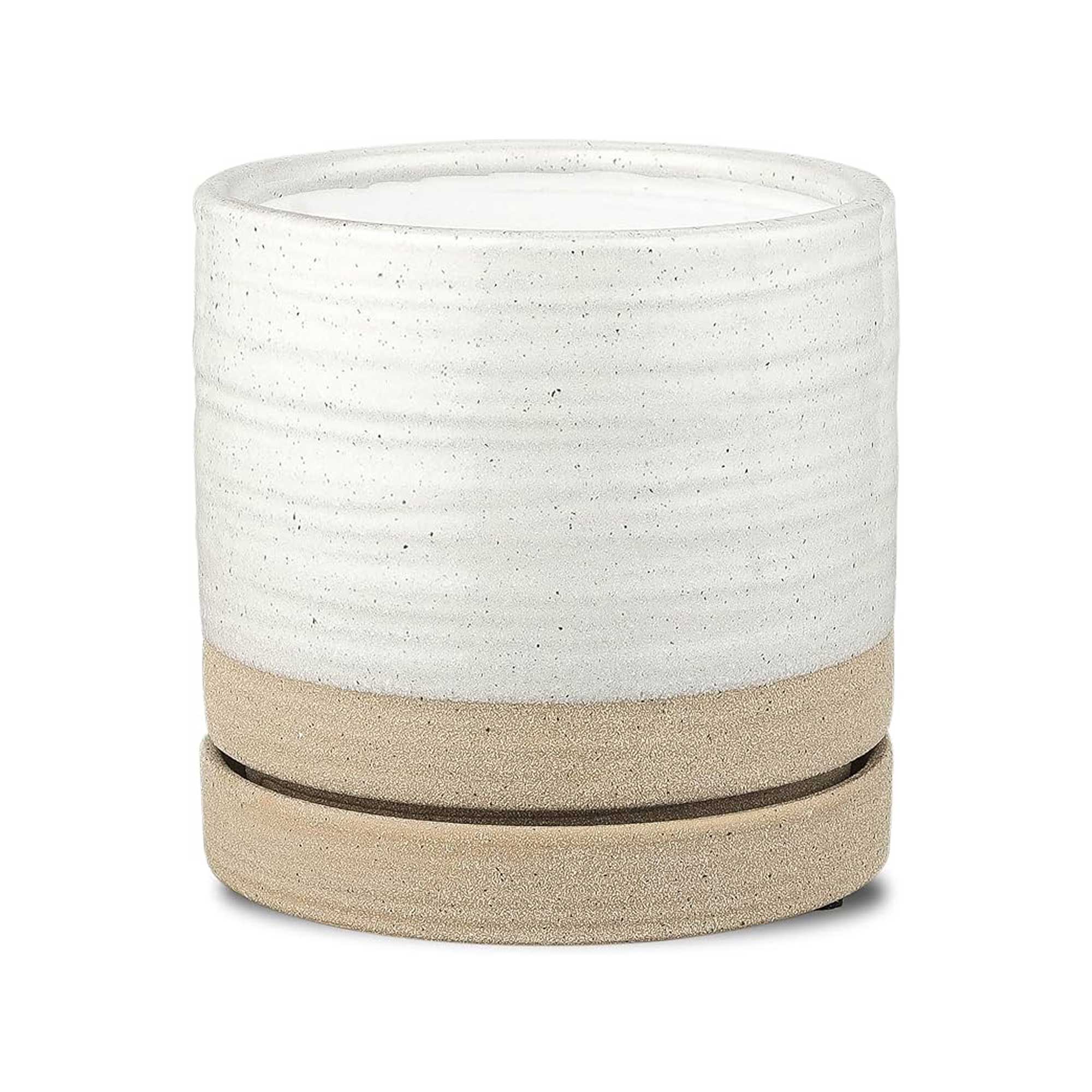
Investing in the best indoor flowering houseplants is a surefire way to lift the spirits and enhance your abode's botanical display.
With help from plant pros, we've rounded up 10 gorgeous blooming varieties for your place — from bright, flowering succulents to fabulously fragrant trailing plants, you'll find plenty of inspiration and practical tips on how to look after them, too.
Whether you're a beginner plant parent, or already tend to a collection of beautiful indoor plants, there's something for everyone in this list.
The 10 best indoor flowering houseplants
It's important to get the lowdown on how to care for houseplants to keep blooming varieties looking their best.
Laura Janney, the founder of The Inspired Garden, says, "Most flowering plants like to be in their native conditions of humidity, warm temperatures, and good light.
"I highly recommend a soil moisture meter," she continues. "It will take all the guesswork out of when and how much to water." We like the look of this moisture meter from The Sill, which measures light and pH levels as well.
Plant containers should have proper drainage, too, Laura says and spent blooms should be deadheaded. Not only will it make your plants look better, it will also encourage more flowers, she explains.
1. Kalanchoe

Laura recommends kalanchoe as one of the best indoor flowering houseplants. She highlights their beautiful, tropical leaves, drought tolerance, and long bloom time.
When caring for these succulents, it's important to use a well-draining soil — this succulent and cactus potting mix from Perfect Plants Nursery is a good match. Laura recommends allowing the planting medium to dry out a little between waterings.
You can buy kalanchoe from Lively Root. Their colorful clusters of flowers will brighten any corner or shelf in your home. Kalanchoe are not pet-friendly houseplants, though, so keep them safely out of reach of four-legged or feathered friends.
2. Peace lily

With elegant white flowers (technically 'spathes'), peace lilies, available at Lively Root, are a popular option for indoor gardens, with compact varieties perfect for a desk, and larger, statement types for dramatic displays.
"A tall plant is great for the floor when you need drama," Laura says. However, these plants are also toxic to pets, so bear this in mind when styling them in your home.
Caring for a peace lily is easy. Laura says to provide bright, indirect light and keep the soil consistently moist (but do not overwater). They can bloom twice a year, she adds, with flowers that can last a month.
3. African violets

Both Laura and Holly Mixon, the owner of houseplant store Itty Bitty Trees, recommend African violets.
Holly says, "Once considered a bit old-fashioned, we're seeing a resurgence in the popularity of African violets. Growers are starting to cultivate new varieties, and variegated leaf violets are increasingly on plant wishlists.
"African violets can be an easy way to have continuously blooming plants with a little extra care," she continues. She recommends keeping them somewhere with bright, indirect light away from direct sunlight, with temperatures between 60–75º Fahrenheit.
Correct watering practices are an essential part of how not to kill houseplants.
"Water African violets from the bottom to prevent water from getting on their fuzzy leaves, which can cause damage," Holly advises. "Fill a saucer or tray with room-temperature water and place the pot in it, allowing the plant to absorb water through the drainage holes in the bottom of the pot. Empty any excess water from the saucer after about 30 minutes to prevent waterlogging."
African violets are available to buy from Lively Root.
4. Begonia

Nastya Vasylchyshyna, a botany expert from Plantum, says, "These plants have already enjoyed centuries of popularity before, and still remain in vogue today, charming people all over the world with their wide spectrum of blooming colors."
Their bronze or silver-tinged waxy leaves look great even in the absence of flowers, she adds.
"Begonias are easy to grow, aren't particularly fussy, and can bloom every year given proper lighting and watering," she says.
Their potting mix needs to be slightly moist at all times, Nastya advises. "Both under- and over watering may lead to the death of the root system. Give your plant a drink every time the topsoil dries off by about an inch."
Holly also recommends these plants, and says they prefer bright, indirect light and warm temperatures. Begonias benefit from regular pruning, as they can become leggy over time, she adds. These Gonicc pruners from Amazon are one of our go-to gardening tool picks, as they're so highly rated.
Like when caring for Chinese money plants, humidity will help begonias thrive. So, consider placing yours on a saucer filled with small pebbles and water.
5. Hoya

Holly says, "Hoyas, also called wax plants, are my favorite indoor flowering plant. They're known for their clusters of star-shaped, waxy flowers and vining habit."
Their blooms are incredibly fragrant, she continues. Depending on the species, they can smell of chocolate, vanilla, butterscotch, and lemon. The smell is stronger in the evenings to attract nighttime pollinators, she adds.
Holly recommends growing these trailing houseplants in hanging baskets or training them to climb up a trellis. When looking after your hoya, give it bright, filtered light out of direct sunlight, she advises. Temperature-wise, they prefer warm conditions between 60–80º Fahrenheit.
"Hoyas should not be overwatered, as they are susceptible to root rot," she notes. "Make sure to let the top couple inches of soil dry between waterings."
Try Hoya pubicalyx "Splash", from Lively Root, which has speckled leaves.
6. Christmas cactus

A popular pick for the holiday season, pair a Christmas cactus (or a Thanksgiving cactus) with a cute plant pot for a charming display on a side table.
These succulents have trailing, segmented stems and exotic-looking blooms, usually in bright reds and pinks. They do best when kept out of direct sunshine, in a humid environment. Be sure to steer clear of the common Christmas cactus mistakes and you'll have a good chance of enjoying their flowers year after year.
7. Lipstick plant

If conditions are right, this beauty (Aeschynanthus radicans) will produce striking, tubular red blooms, which look similar to lipsticks. As a tropical plant, it likes humidity, warmth, and bright, indirect light. Try positioning it on a high shelf or in a hanging planter, to admire the trailing stems.
You can shop for lipstick plants in hanging planters from The Sill. Keep an eye out for curly-leaved varieties, too, such as "Rasta".
8. Moth orchid

Nastya says there is a large variety of moth orchid cultivars, with their distinctive flowers coming in various sizes, shades, and patterns. "These plants are renowned for their long blooming period, which can last for well over two months."
Stunning varieties include the "Arcadia" moth orchid, available from Lively Root, with its dramatic, pink-patterned blooms. For something a little more demure, the mini white orchid, from The Sill is perfect for brightening up a home office.
Learning how to care for orchids isn't too difficult with a bit of know-how. "Make sure to use a loose, light, and well-draining growing medium," Nastya advises. "You can buy a pre-made potting mix for orchids at a garden center. It's usually slightly acidic, low in nutrients, and made of peat, sphagnum moss, or tree bark."
We like the look of this well-rated phalaenopsis orchid potting mix from Better-Gro at Amazon.
"Do not re-pot when in bloom," Laura adds. When the flowers fade, she recommends snipping them off by cutting the stem down to the nearest visible node.
9. Calla lily

Calla lilies are elegant flowering plants hailing from South Africa with blooms in shades of white, yellow, orange, purple, and pink. They often have slightly speckled foliage.
Caring for calla lilies indoors is straightforward. Laura recommends watering the potting mix when the top third is dry, pruning dead leaves, and raising the humidity level around them.
To do the latter, you could invest in a humidifier – this 1.5-liter one from Amazon has a stylish look.
10. Amaryllis

Get to grips with the essentials of amaryllis care and these brilliant, blooming bulbs will bring serious wow-factor to your festive displays. They have huge, trumpet-shaped flowers in pink, white, and red hues, and long, slender leaves.
Avoid water logging the soil to reduce risks of the bulbs rotting, and deadhead the flowers once they've finished their spectacular show. Let the leaves die back naturally, before cutting them off, as they will feed the bulb for next year's flowers.
What to shop

Price: $25.99
These six-inch pots with drainage and saucers are perfect for showing off small kalanchoe and other compact plants. A larger size is also available.

Price: $18.99
Provide your flowering houseplants with precise hydration with this lightweight, stainless steel watering can. An essential for a happy and healthy indoor garden.

Price: $12.46
While this four-quart bag of organic potting soil from Espoma is brilliant for planting up African violets, it can also be used for other flowering indoor plants.
FAQs
Should you fertilize flowering houseplants?
Holly says, "With all flowering plants, it's important to emphasize fertilization. Flowering takes a lot of energy, so we need to be mindful to replenish the soil regularly." She recommends fertilizing them at least monthly throughout the spring and summer.
The Miracle-Gro Blooming Houseplant Food, from Walmart, is a well-rated option. Be sure to check application instructions before you use it on your plants.
Why won't my houseplant flower?
A lack of blooms can be caused by not enough light, incorrect watering or temperatures, not enough nutrients in the soil, and other environmental factors. Different plants have different requirements, so always check the tag before you buy.
Alongside the best indoor flowering houseplants, there are lots of other botanical beauties that can bring an indoor space to life.
Learn the essentials of fern care, for instance, and you can enjoy their fabulous foliage in your home. Or, perhaps caring for air plants is more tempting, with their spiky structure and low-maintenance nature.







